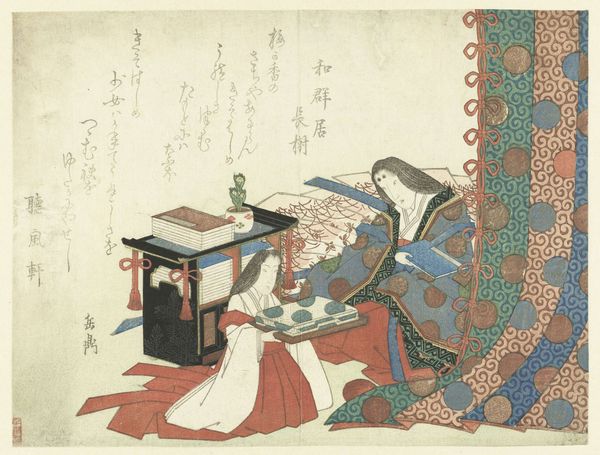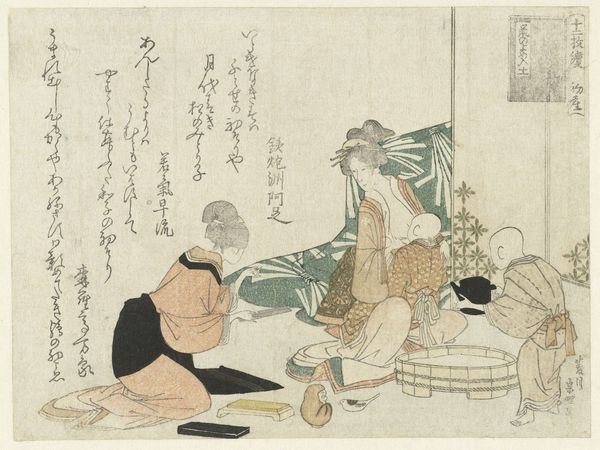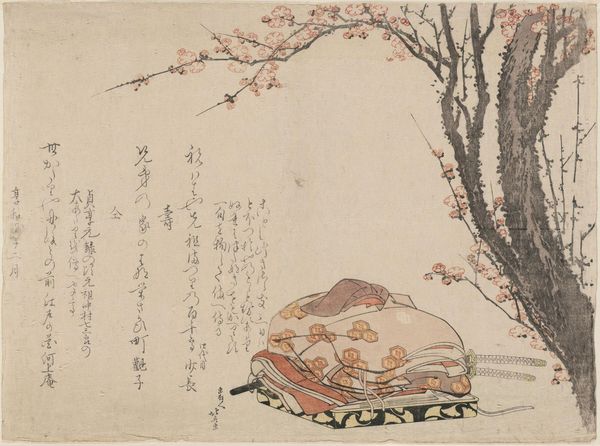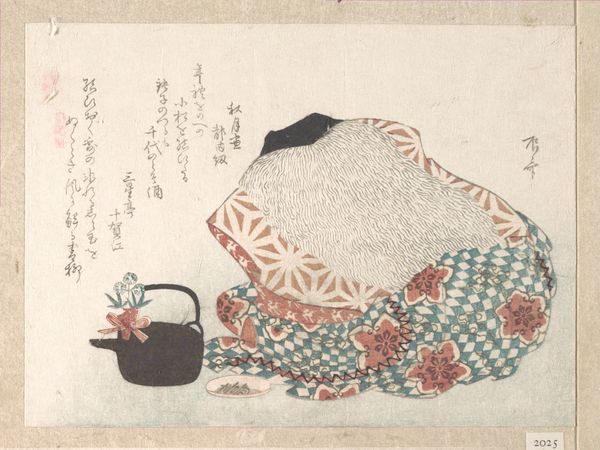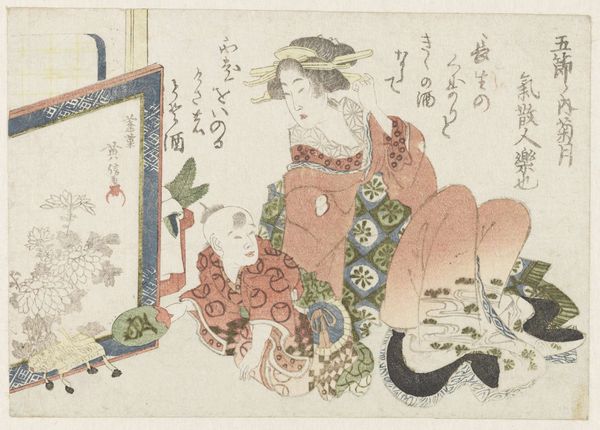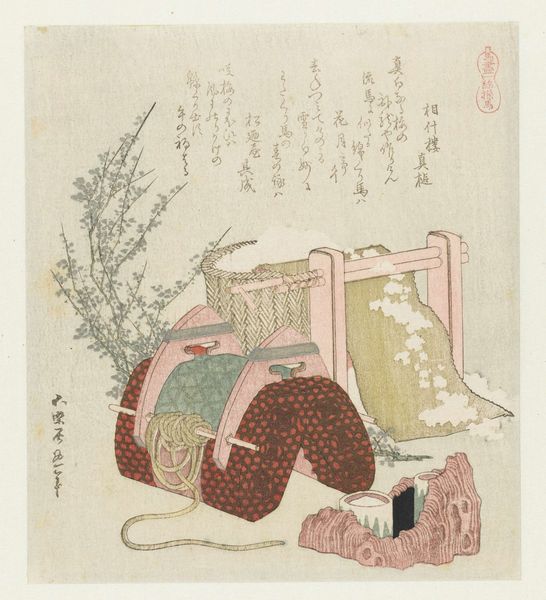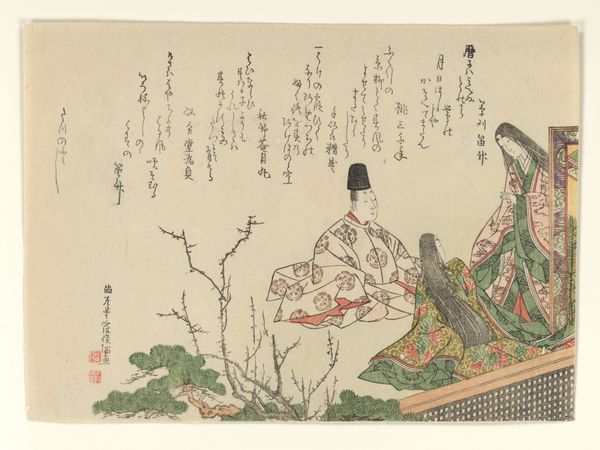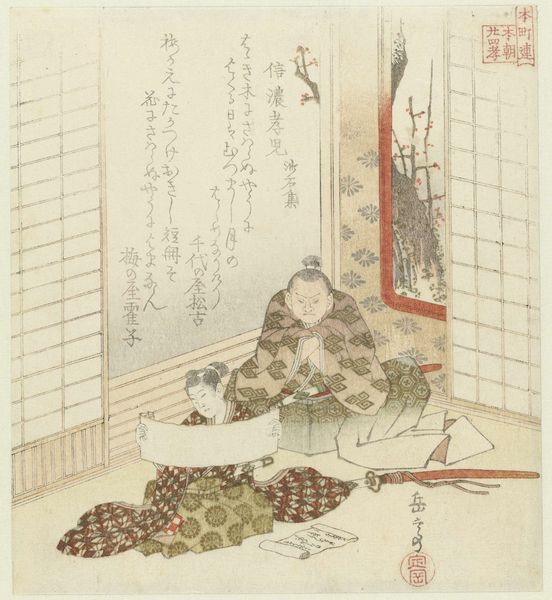
Dimensions: height 195 mm, width 280 mm
Copyright: Rijks Museum: Open Domain
This color woodblock print showing a still life with koto was made in Japan by Hishikawa Sōri around the early 19th century. In this period, the Edo Shogunate imposed strict social hierarchies that dictated the lives of ordinary people. This print invites us to consider the intersection of artistic expression and social norms. The koto, a traditional Japanese stringed instrument, appears alongside a bonsai plant, a lacquered box and what seems to be an elegant kimono, each object carefully chosen to represent refined taste. The presence of calligraphy suggests the importance of literacy and poetry, key features of Japanese cultural life. But how did such cultural values relate to the wider context of Japanese society at the time? Archival sources, such as diaries, letters, and government records, can help us reconstruct the everyday lives of people who lived in Japan at the time, shedding light on how art reflected and shaped their world.
Comments
No comments
Be the first to comment and join the conversation on the ultimate creative platform.
